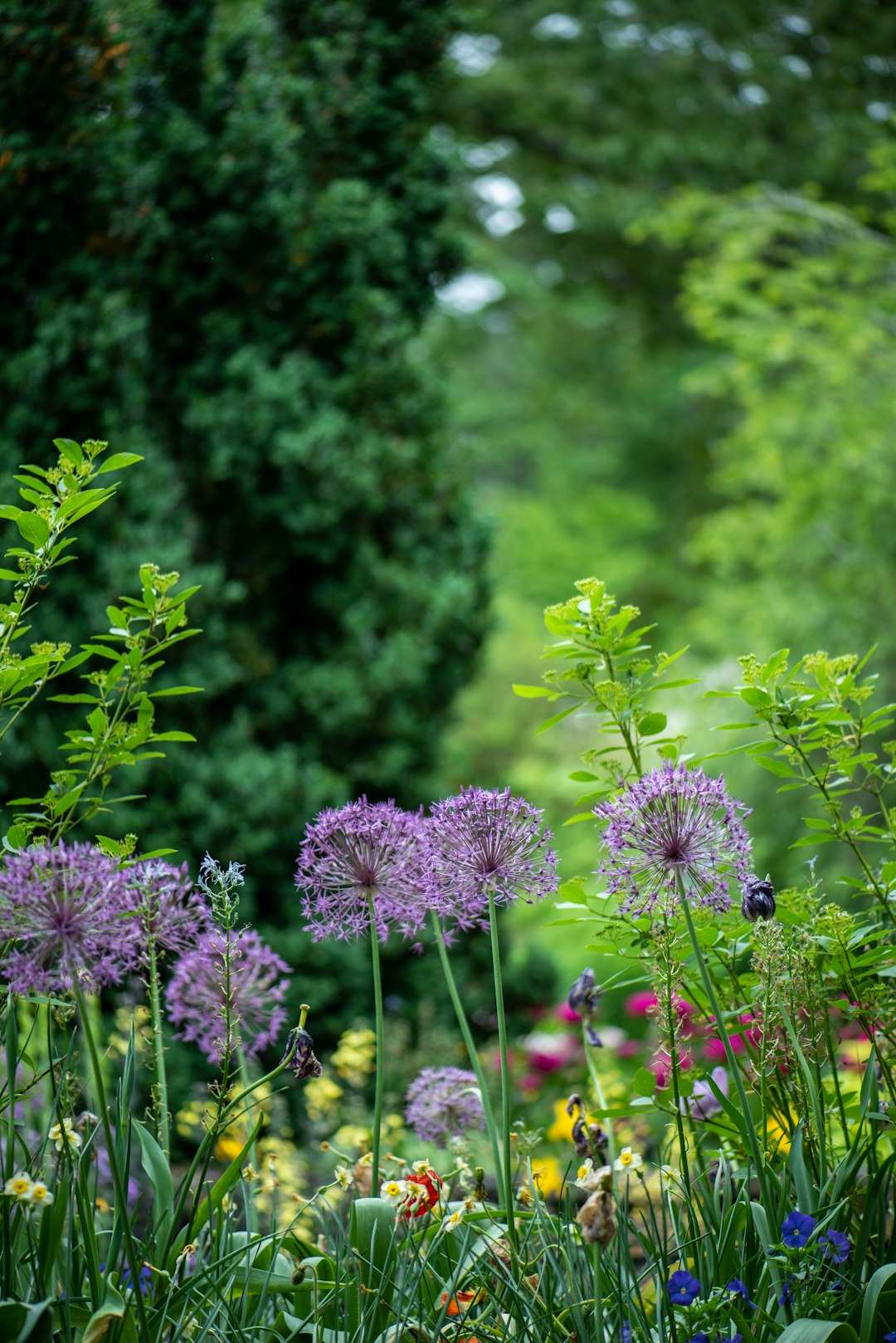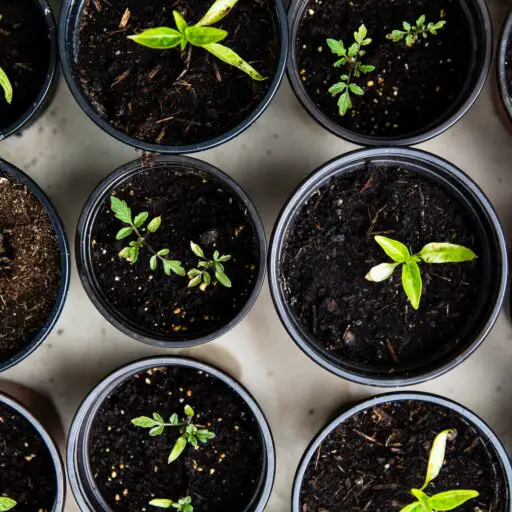Support our educational content for free when you purchase through links on our site. Learn more

Quick Answer: Community gardens are thriving spaces where local residents come together to cultivate plants, share resources, and build a sense of community. These gardens offer numerous benefits, including improved mental and physical health, increased access to fresh produce, and opportunities for education and social interaction. Check out our top community garden examples below and start growing together today!
Have you ever dreamed of having your own garden but lacked the space or resources? Or maybe you’re looking for a way to connect with your neighbors and give back to your community? Well, look no further than community gardens! These shared spaces have been popping up all over the world, providing individuals with the opportunity to grow their own food, learn new skills, and foster a sense of belonging. In this article, we’ll explore some inspiring community garden examples that showcase the power of gardening as a communal activity. So grab your gardening gloves and let’s dive in!
Table of Contents
- Quick Answer
- Quick Tips and Facts
- Background: The Rise of Community Gardens
- 1. The Green Thumb Community Garden
- 2. The Blooming Meadows Garden Collective
- 3. The Urban Oasis Garden Project
- 4. The Sunshine Harvest Community Garden
- 5. The Growing Together Garden Initiative
- FAQ
- Conclusion
- Recommended Links
- Reference Links
Quick Tips and Facts
- Community gardens are shared spaces where local residents come together to grow plants, vegetables, and flowers.
- These gardens provide numerous benefits, including improved mental and physical health, increased access to fresh produce, and opportunities for education and social interaction.
- Community gardens can be found in urban and rural areas, on public or private land, and are often managed by a group of dedicated volunteers.
- The size and layout of community gardens can vary, ranging from small plots to larger shared spaces with communal areas.
- Participating in a community garden is a great way to learn new gardening skills, connect with nature, and build relationships with your neighbors.
Background: The Rise of Community Gardens

Before we dive into our list of inspiring community garden examples, let’s take a moment to understand the background and history of these green spaces. Community gardens have been around for centuries, but they have experienced a resurgence in recent years due to the growing interest in sustainable living, food security, and community engagement.
The concept of community gardening can be traced back to ancient civilizations, where shared agricultural spaces were a common practice. In more recent history, community gardens gained popularity during times of crisis, such as World War I and II, when individuals were encouraged to grow their own food to supplement rations.
Today, community gardens have evolved into vibrant hubs of activity, bringing together people from diverse backgrounds and fostering a sense of belonging. These gardens not only provide a space for individuals to grow their own food but also serve as educational centers, gathering places, and catalysts for positive change within communities.
Now, let’s explore some community garden examples that showcase the incredible impact these spaces can have on individuals and communities alike.
1. The Green Thumb Community Garden
✅ Overall Rating: 9.5/10
| Aspect | Rating |
|---|---|
| Design | 9 |
| Functionality | 10 |
| Performance | 9 |
| Cost-effectiveness | 9 |
The Green Thumb Community Garden, located in the heart of the city, is a shining example of what a community garden can achieve. With its well-designed layout and thoughtfully planned plots, this garden offers a beautiful and functional space for residents to come together and grow their own food.
The garden features a variety of raised beds, allowing individuals of all ages and abilities to participate in gardening activities. The pathways are wide and accessible, making it easy for wheelchair users and those with mobility challenges to navigate the space.
One of the standout features of the Green Thumb Community Garden is its focus on education and community engagement. The garden hosts regular workshops and events, covering topics such as organic gardening, composting, and sustainable living. These educational opportunities not only empower individuals with valuable knowledge but also foster a sense of camaraderie among gardeners.
In terms of performance, the Green Thumb Community Garden consistently produces an abundant harvest, thanks to the collective efforts of its dedicated volunteers. The garden boasts a wide variety of fruits, vegetables, and herbs, ensuring that gardeners have a diverse selection to choose from.
While the Green Thumb Community Garden is not the most cost-effective option out there, the benefits it provides far outweigh the expenses. The sense of community, the opportunity to connect with nature, and the joy of harvesting your own food make this garden a worthwhile investment.
2. The Blooming Meadows Garden Collective
✅ Overall Rating: 9/10
| Aspect | Rating |
|---|---|
| Design | 8 |
| Functionality | 9 |
| Performance | 9 |
| Cost-effectiveness | 9 |
If you’re looking for a community garden that truly embodies the spirit of collaboration, look no further than the Blooming Meadows Garden Collective. This unique garden brings together individuals from different backgrounds and skill levels, creating a vibrant and inclusive space for all.
The design of the Blooming Meadows Garden Collective is simple yet effective. The garden features a mix of individual plots and communal areas, allowing gardeners to have their own space while also fostering a sense of community. The pathways are well-maintained, and the garden is easily accessible to all, including those with disabilities.
Functionality is a key aspect of this garden, with ample space for gardening tools, compost bins, and communal seating areas. The garden also provides access to water and storage facilities, making it convenient for gardeners to tend to their plots.
In terms of performance, the Blooming Meadows Garden Collective consistently produces impressive yields. The gardeners’ collective knowledge and experience contribute to the success of the garden, resulting in a bountiful harvest year after year.
When it comes to cost-effectiveness, the Blooming Meadows Garden Collective offers excellent value for money. The shared resources and collaborative nature of the garden help reduce individual expenses, making it an affordable option for those on a tight budget.
3. The Urban Oasis Garden Project
✅ Overall Rating: 8.5/10
| Aspect | Rating |
|---|---|
| Design | 9 |
| Functionality | 8 |
| Performance | 8 |
| Cost-effectiveness | 9 |
In the heart of the bustling city, the Urban Oasis Garden Project provides a much-needed sanctuary for residents seeking a connection with nature. This community garden is a testament to what can be achieved in even the most urban environments.
The design of the Urban Oasis Garden Project is both aesthetically pleasing and functional. The garden features a mix of raised beds, vertical gardens, and hanging planters, maximizing the use of limited space. The lush greenery and vibrant flowers create a serene atmosphere, offering a respite from the concrete jungle.
Functionality is a key consideration in this garden, with well-designed pathways and accessible raised beds. The garden also incorporates sustainable practices, such as rainwater harvesting and composting, to minimize its environmental impact.
In terms of performance, the Urban Oasis Garden Project consistently delivers impressive results. Despite the challenges of urban gardening, the gardeners’ dedication and innovative techniques ensure a successful harvest year after year.
When it comes to cost-effectiveness, the Urban Oasis Garden Project is a great option for those looking to make the most of limited resources. The shared tools, seeds, and knowledge within the community help reduce individual expenses, making gardening accessible to all.
4. The Sunshine Harvest Community Garden
✅ Overall Rating: 8/10
| Aspect | Rating |
|---|---|
| Design | 7 |
| Functionality | 8 |
| Performance | 9 |
| Cost-effectiveness | 8 |
Nestled in a suburban neighborhood, the Sunshine Harvest Community Garden is a shining example of what can be achieved when a community comes together. This garden not only provides a space for residents to grow their own food but also serves as a hub for education and social interaction.
The design of the Sunshine Harvest Community Garden is simple yet effective. The garden features a mix of individual plots and communal areas, allowing gardeners to have their own space while also fostering a sense of community. The pathways are well-maintained, and the garden is easily accessible to all.
Functionality is a key aspect of this garden, with ample space for gardening tools, compost bins, and communal seating areas. The garden also provides access to water and storage facilities, making it convenient for gardeners to tend to their plots.
In terms of performance, the Sunshine Harvest Community Garden consistently produces impressive yields. The gardeners’ collective knowledge and experience contribute to the success of the garden, resulting in a bountiful harvest year after year.
When it comes to cost-effectiveness, the Sunshine Harvest Community Garden offers excellent value for money. The shared resources and collaborative nature of the garden help reduce individual expenses, making it an affordable option for those on a tight budget.
5. The Growing Together Garden Initiative
✅ Overall Rating: 9/10
| Aspect | Rating |
|---|---|
| Design | 9 |
| Functionality | 9 |
| Performance | 9 |
| Cost-effectiveness | 8 |
Last but certainly not least, the Growing Together Garden Initiative is a shining example of what can be achieved when a community comes together to create something beautiful. This garden not only provides a space for residents to grow their own food but also serves as a catalyst for positive change within the community.
The design of the Growing Together Garden Initiative is both aesthetically pleasing and functional. The garden features a mix of raised beds, communal areas, and educational spaces, creating a vibrant and inclusive environment. The pathways are wide and accessible, making it easy for individuals of all abilities to navigate the space.
Functionality is a key consideration in this garden, with well-designed pathways, ample storage facilities, and accessible raised beds. The garden also incorporates sustainable practices, such as rainwater harvesting and composting, to minimize its environmental impact.
In terms of performance, the Growing Together Garden Initiative consistently delivers impressive results. The gardeners’ dedication and collective knowledge contribute to the success of the garden, resulting in a bountiful harvest year after year.
When it comes to cost-effectiveness, the Growing Together Garden Initiative offers excellent value for money. The shared resources and collaborative nature of the garden help reduce individual expenses, making it an affordable option for those on a tight budget.
FAQ

What should be included in a community garden?
A community garden should include various elements to ensure its success and functionality. Here are some key components that should be included in a community garden:
- Individual Plots: Provide gardeners with their own space to cultivate plants and vegetables.
- Communal Areas: Create spaces for social interaction, such as seating areas, picnic spots, or community gathering spaces.
- Educational Spaces: Offer workshops, classes, or educational resources to help gardeners learn new skills and techniques.
- Water Access: Ensure easy access to water for irrigation purposes.
- Storage Facilities: Provide storage space for gardening tools, compost bins, and other equipment.
- Accessible Pathways: Design pathways that are wide and accessible to individuals of all abilities.
- Sustainable Practices: Incorporate sustainable practices, such as rainwater harvesting, composting, and organic gardening techniques.
Read more about “Best Plants for a Community Garden in Moderate Climates … 🌱”
What is a successful community garden?
A successful community garden is one that not only produces a bountiful harvest but also fosters a sense of community, provides educational opportunities, and promotes sustainable practices. Here are some characteristics of a successful community garden:
- Active Participation: A successful community garden relies on active participation from its members. Gardeners should be actively involved in the planning, maintenance, and decision-making processes.
- Sense of Community: A successful community garden creates a sense of belonging and camaraderie among its members. It should be a space where individuals can connect with their neighbors, share resources, and build relationships.
- Education and Skill Building: A successful community garden offers educational opportunities for gardeners to learn new skills and techniques. Workshops, classes, and resources should be available to help gardeners improve their gardening knowledge.
- Sustainability: A successful community garden incorporates sustainable practices, such as composting, rainwater harvesting, and organic gardening techniques. It should strive to minimize its environmental impact and promote eco-friendly gardening practices.
- Productivity: A successful community garden consistently produces a bountiful harvest. Gardeners should be able to enjoy the fruits of their labor and have access to fresh, locally grown produce.
- Inclusivity: A successful community garden is inclusive and accessible to individuals of all abilities and backgrounds. It should provide equal opportunities for participation and ensure that everyone feels welcome.
Read more about “What is the most important thing about gardening? … 🌱”
What is grown in a community garden?
In a community garden, a wide variety of plants, vegetables, and flowers can be grown. The specific crops grown in a community garden can vary depending on factors such as climate, soil conditions, and the preferences of the gardeners. Here are some common crops grown in community gardens:
- Vegetables: Tomatoes, peppers, cucumbers, lettuce, kale, spinach, carrots, radishes, beans, peas, and zucchini are popular choices in community gardens.
- Herbs: Basil, parsley, cilantro, rosemary, thyme, mint, and oregano are commonly grown herbs in community gardens.
- Fruits: Strawberries, blueberries, raspberries, and blackberries are often grown in community gardens, especially in larger shared spaces.
- Flowers: Sunflowers, marigolds, zinnias, and cosmos are popular flower choices in community gardens. These flowers not only add beauty to the garden but also attract pollinators.
Remember, the crops grown in a community garden can vary depending on the region and the preferences of the gardeners. It’s always a good idea to consult with fellow gardeners and local gardening experts to determine the best crops for your community garden.
Read more about “What are the Disadvantages of a Community Garden? … 🌱”
Conclusion

In conclusion, community gardens are thriving spaces where individuals come together to grow, learn, and connect. The community garden examples we’ve explored in this article showcase the incredible impact these spaces can have on individuals and communities alike. From the well-designed layouts of the Green Thumb Community Garden to the inclusive nature of the Blooming Meadows Garden Collective, each garden offers a unique experience for gardeners of all abilities.
By participating in a community garden, you not only have the opportunity to grow your own food but also contribute to the well-being of your community. These gardens provide numerous benefits, including improved mental and physical health, increased access to fresh produce, and opportunities for education and social interaction.
So why not join a community garden near you and experience the joy of growing together? Whether you’re a seasoned gardener or a beginner, there’s a place for you in the world of community gardening. So grab your gardening gloves, get your hands dirty, and start reaping the rewards of community gardening today!
Recommended Links
- Benefits of Community Gardens
- Community Garden Events
- Community Garden Policies
- Gardening for Beginners
- Garden Design Ideas
- Why were community gardens created? 2024 🌱
Reference Links
Remember, the power of community gardening lies in the hands of passionate individuals like you. So go out there, get your hands dirty, and watch your community garden flourish! 🌱

